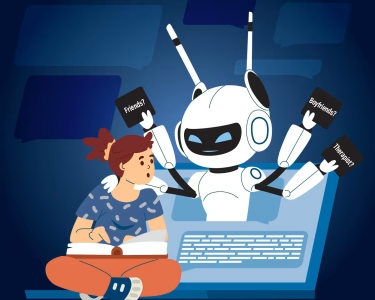🧠 Why Japan Is Using AI to Combat Elderly Loneliness
1. A Demographic Crisis and Caregiver Shortage
Japan faces one of the world’s fastest‑aging societies. By 2025, nearly 30% of its population is over age 65. The birth rate continues to decline—only about 720,988 babies were born in 2024, a record low. Employment in nursing care is critically strained: in December 2024, there was only one applicant for every 4.25 caregiver job openings, compared to a national average of 1.22 (Think with Niche). The government anticipates these shortages becoming more severe by 2030 unless technology intervenes (Reuters).
2. Social Isolation Is a Health Hazard
Many elderly Japanese live alone or in isolated settings, exacerbating loneliness—a condition linked to depression, anxiety, cognitive decline, and even heart disease. Seniors who interact with others less than once a month are 1.5× more likely to develop dementia than those with daily contact (The Japan Times).
3. AI and Robots: Bridging the Emotional Gap
Japan is pioneering a range of AI-driven solutions aimed at improving both emotional and physical health:
- Companion robots like PARO (a therapeutic seal), AIBO (Sony’s robotic dog), and Pepper (a humanoid robot) are widely deployed in nursing homes. These robots engage residents with conversation, nostalgic songs, soft touch, and familiar gestures, helping reduce anxiety and spark social interaction (Cord Magazine).
- Psychological studies have shown that memory-based AI conversations—designed to evoke recollection of events, especially from the Showa era (1926–89)—stimulate cognitive activity, support emotional resilience, and potentially slow dementia onset. For example, seniors who chatted regularly with an AI persona called Mako showed improvements in verbal memory and subjective well‑being over three months (The Japan Times).
- Hugging robots, developed by firms like Fuji Corporation in Tokyo, use soft fabric, pressure sensors, warmth, and heartbeat-like vibration to simulate human touch. Clinical trials report reduced anxiety and increased emotional stability after interacting with these robots (Japan Daily).
4. Real‑World AI Caregiving Prototypes
- AIREC, a humanoid robot prototype from Waseda University, can assist in physical caregiving tasks—like turning patients to prevent bedsores or helping change clothes—offering essential relief in labor-intensive settings. Full deployment is expected around 2030, at an estimated initial cost of ¥10 million (~US $67,000) (The Japan Times).
- Simpler robots such as Satoshi‑kun, a conversational “comfort robot”, ask seniors about their feelings via button prompts and provide empathetic suggestions in over 20,000 patterns. Priced at roughly ¥30,000 (~US $220), they offer a low-cost emotional intervention tool (JAPAN Forward).
- Eye‑tracking or sensor analytics combined with AI monitor behavioral patterns—tracking sleep, movement, and vocal cues—to detect emergencies or health changes, enabling early intervention and reducing hospital readmissions (Diwarta News).
5. Partnerships & Government Support
Japan’s national initiatives, like the Robot Revolution Initiative and Society 5.0, emphasize government-backed funding, subsidizing technology adoption in care facilities. Since 2015, billions of yen have been invested to stimulate both innovation and institutional adoption across thousands of nursing homes (World Economic Forum).
6. Balancing Ethics, Empathy & Technology
- Japan’s infrastructure institutions underscore that AI isn’t meant to replace human caregivers, but to support and enhance their capacity—freeing them for emotionally complex care aspects such as conversation and companionship (Diwarta News).
- Ethical review boards oversee AI usage and data privacy. Experts stress that emotional AI must respect dignity, avoid over-reliance, and never substitute human connection completely (The Japan Times, Diwarta News).
✅ Summary: Why AI Helps Fight Elder Loneliness in Japan
- Aging crisis + caregiver shortages require scalable solutions.
- Human loneliness carries serious health risks.
- AI robots (PARO, Pepper, AIBO, hugging robots) offer emotional companionship and cognition‑boosting engagement.
- Conversational AI platforms gently prompt retrospection and human connection.
- Robots like AIREC and Satoshi‑kun address both physical support and mental health needs.
- Government subsidies and ethical oversight ensure inclusive and respectful adoption.
AI in eldercare is not about replacing people—it’s about making caregiving more humane, personalized, and sustainable. As Japan pioneers this path, other nations facing similar demographic challenges may follow suit.




